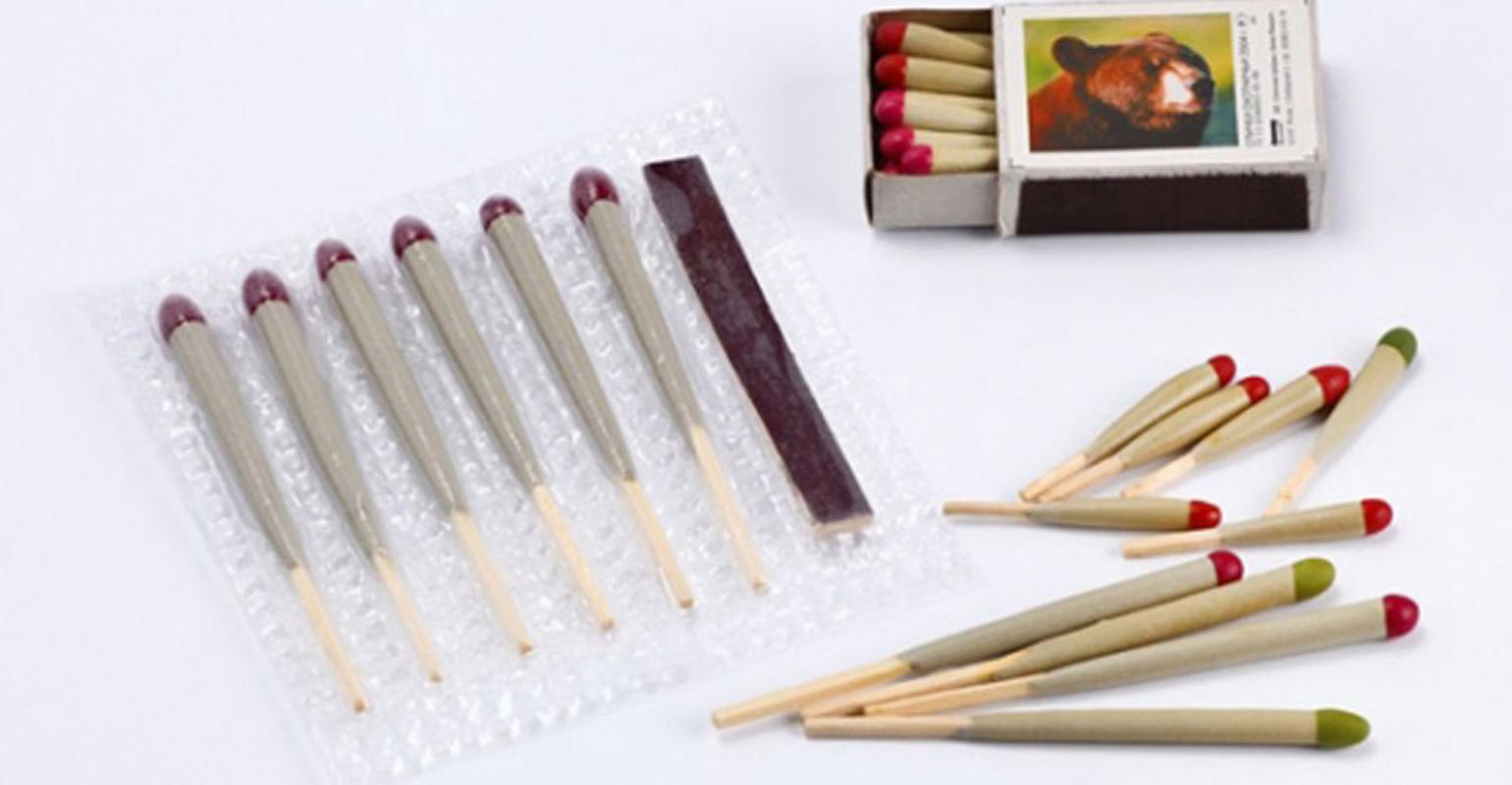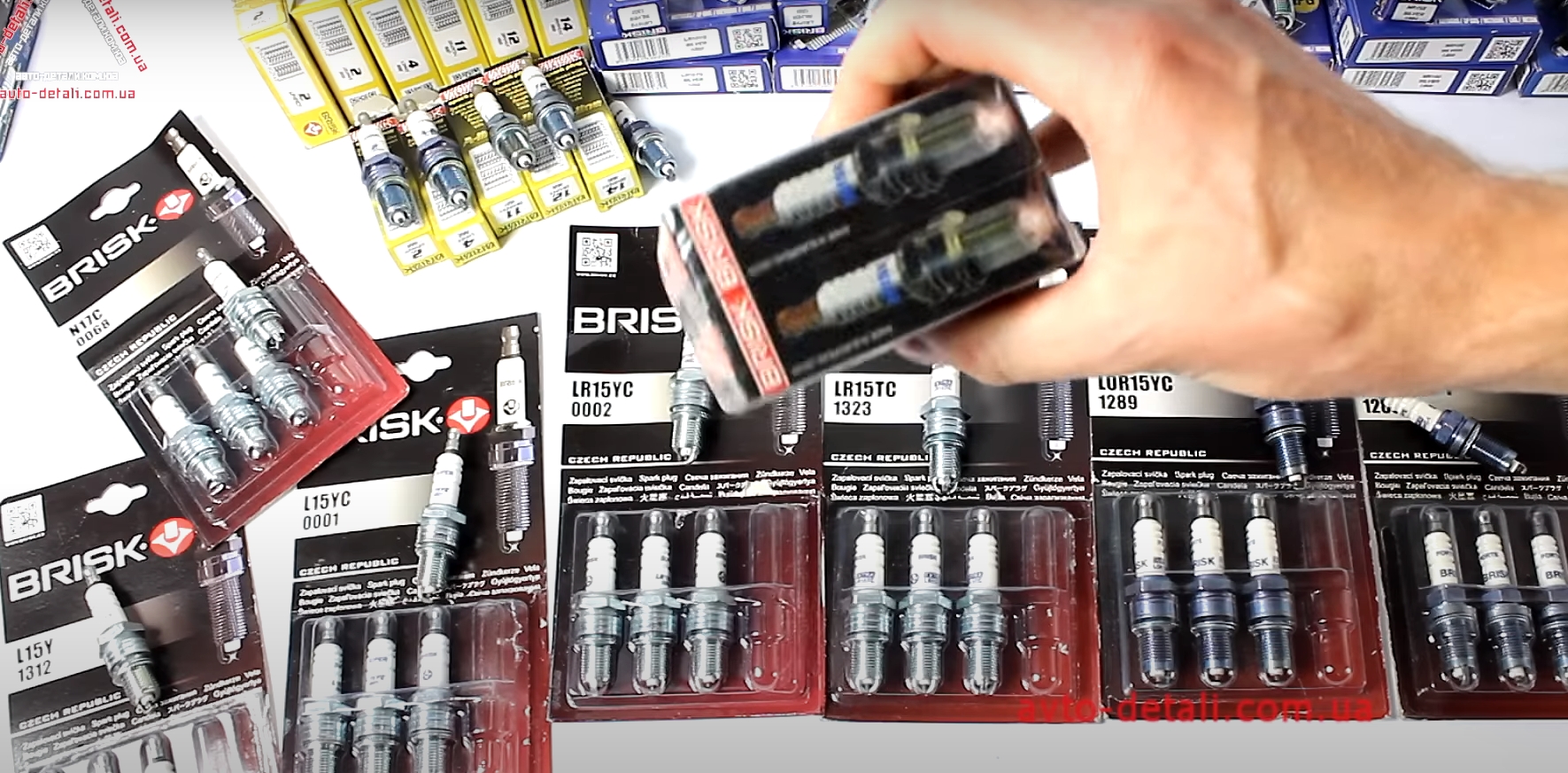Ranking the best flat roof materials in 2022
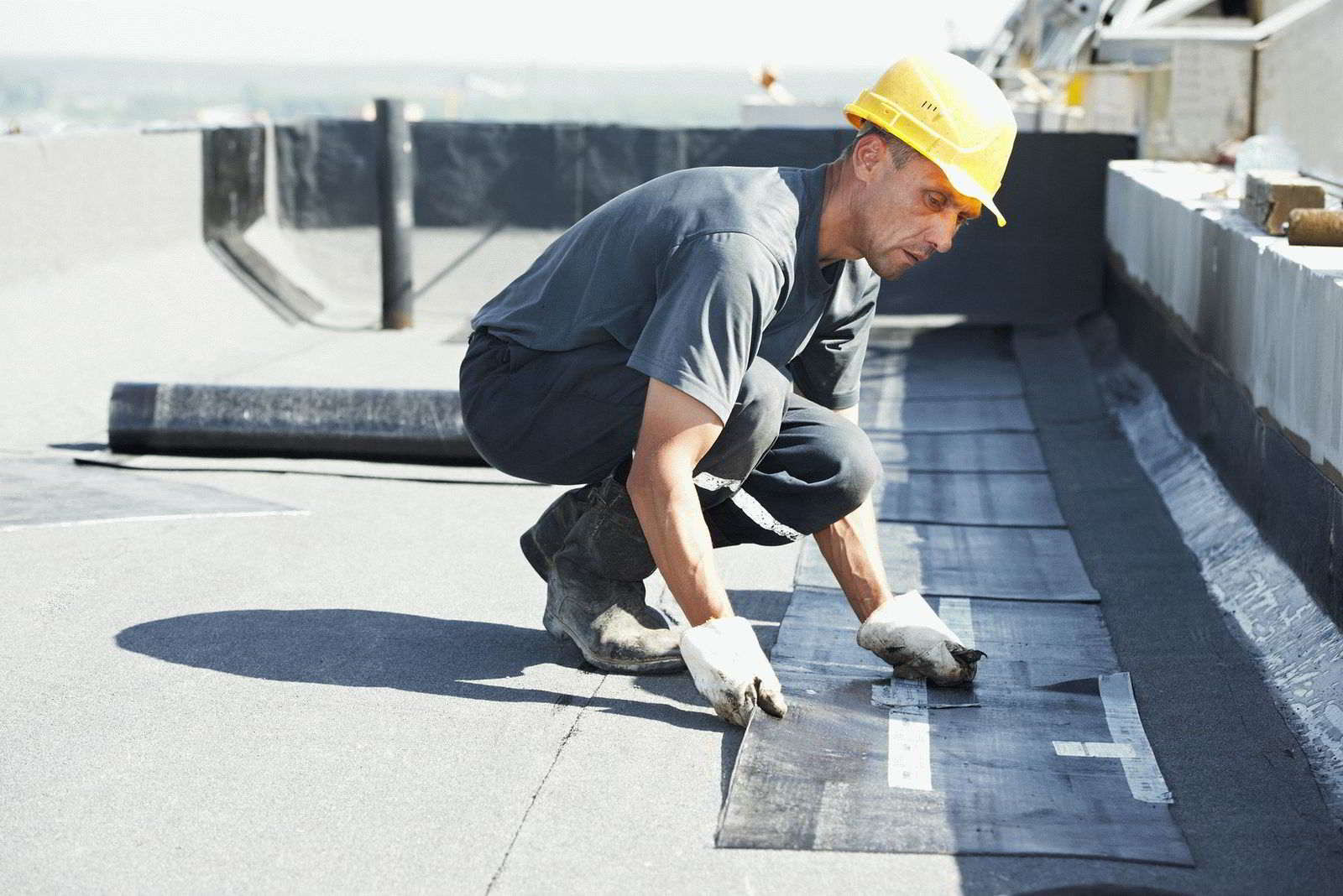
Content
History of roofing
There is no bad weather,
Every weather is a blessing.
But when nature is harsh on us,
The roof must be tightly covered!
Few people know that the expression "to have a roof over your head" was not originally identical to the expression "to have housing in general." The fact is that the poor inhabitants of many African countries build their dugouts literally without a roof, so that the building is not considered a house in the full sense of the word, and you would not have to pay tax for it. Extremely rare precipitation in those countries makes it possible to live without a roof over your head, and during periods of rain simply cover the dwellings with tarpaulin or polyethylene. As an option: such an under-house is simply covered with wide leaves, which will protect from the weather, and in fact are not a roof.
The harsh nature of less hot regions does not allow such liberties, and the roof in the house is designed, first of all, to protect residents from precipitation: rain, snow. Its second function is thermal protection. Keeping a building at a comfortable temperature for existence is the task of not only the walls, but also the roof. Both functions are performed not so much by the frame as by the outer covering, called the roof. It is the roof that mainly provides water tightness and thermal protection.
Since ancient times, residents of countries with an unfriendly climate have used various materials for roofing: straw, wood, animal skins. Later - clay and metal.
In Rus', the roof was made mainly of wood (with waxing for better moisture protection) and fastened with a tiled method (nails were prohibitively expensive). Laying "ploughshare" or "male", made without a single nail, served as a good protection for the huts at any time of the year. Wood, both for huts and for roofing, was taken durable, proven for centuries. The best material was Siberian larch. Incredibly strong, very resinous, it is still the backbone of Venice and forms the basis of many old European bridges.
No matter how strong and reliable wood is, it somehow has a short service life compared to metal, concrete, clay.
The roofs used to be completely pitched, therefore they required additional reinforcing structures (beams) and the creation of attics.
Over time, flat roofs, without slopes, firmly came into use. They have a number of disadvantages compared to a pitched roof (there is no drain, the need for cleaning from heavy rainfall, sometimes a drain is needed, which also has problems). But there are also pluses: exploitability (i.e., something can be placed on them), no need to create an attic, lower cost compared to pitched, convenient installation of equipment (antennas, air conditioners, etc.), more convenient exit (no need to use outdoor stairs), more convenient repair.
However, flat roofs must be protected in a special way, because the precipitation from it does not disappear by itself.
The main types of materials for covering flat roofs 2022
- bituminous;
- polymeric membranes;
- bulk mastics.
Bitumen roofing materials for flat roofs
Ruberoid
The most common waterproofing material today. Its composition is cardboard impregnated with bitumen.On one or both sides, the roll is sprinkled with protective sand, talc, asbestos, etc. The service life of the roofing material is on average 5-10 years. Almost does not absorb moisture, resistant to mechanical stress and damage: snowdrifts or heavy hail are not terrible for him. And this material is afraid of temperature. At 50 degrees and above, it will melt, and in severe frost it will crack. But it is easy to operate and install and relatively cheap.
Popular brands of roofing material:
Ruberoid RPP-300 C 15 sq.m
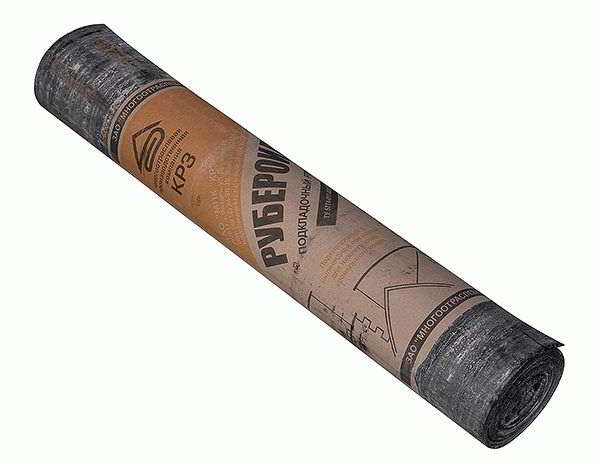
Medium-density roofing felt for roofs where no hard loads are planned.
Producer: "KRZ", Ryazan.
Filling: powdered talc.
Density: 300 g/sq.m.
Roll size: 1x15 meters.
Average price: 270 rubles per roll.
- low price;
- ease of storage and transportation;
- can be ordered in pallets (each - 40 rolls).
- resistant to extreme temperatures;
- lengthy installation.
Glassine P-250 1×20 m
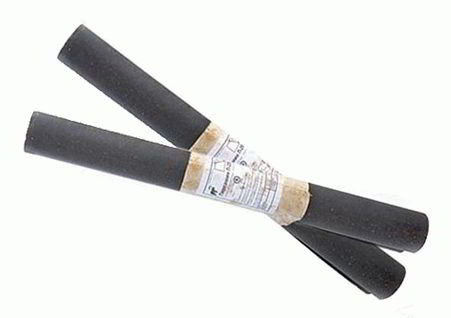
Thin roofing material without sprinkling - for roofs that are not planned to be used at all or roofs that are not subject to serious loads (heavy snowfalls, hail).
Manufacturer: TechnoNIKOL
Filling: absent.
Thickness: 1.1mm.
Roll size: 1x20 meters.
Roll weight: 3.5 kg.
Average price: 160 rubles per roll.
- very low price;
- relatively small weight.
- no protective coating.
Roofing material RKP-350 GOST 15 sq.m
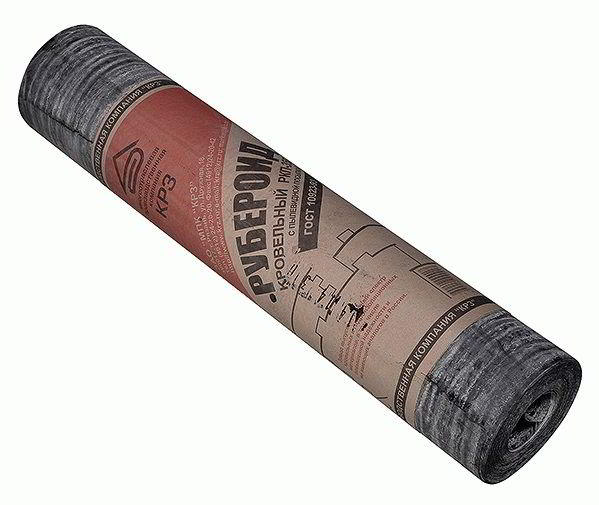
Differs in the increased density and greater resistance to tearing. It is used for roofs that are planned to be heavily loaded (machinery, installation of equipment, etc.) or in harsh weather conditions.
Producer: "KRZ", Ryazan.
Filling: powdered talc.
Density: 300 g/sq.m.
Roll size: 1x15 meters.
Average price: 450 rubles per roll.
- high density, tear resistance, durability.
- the price is above average;
- installation will require a number of auxiliary materials that must be purchased separately.
Visually about how to lay roofing material on the roof:
Rubemast
Improved version of ruberoid. It differs only in a thicker layer of bitumen on its underside. Thus, its plasticity, resistance to cracking increases. The service life of such material can reach up to 15 years.
Popular manufacturers of rubemast:
Rubemast RNP 350-1.5
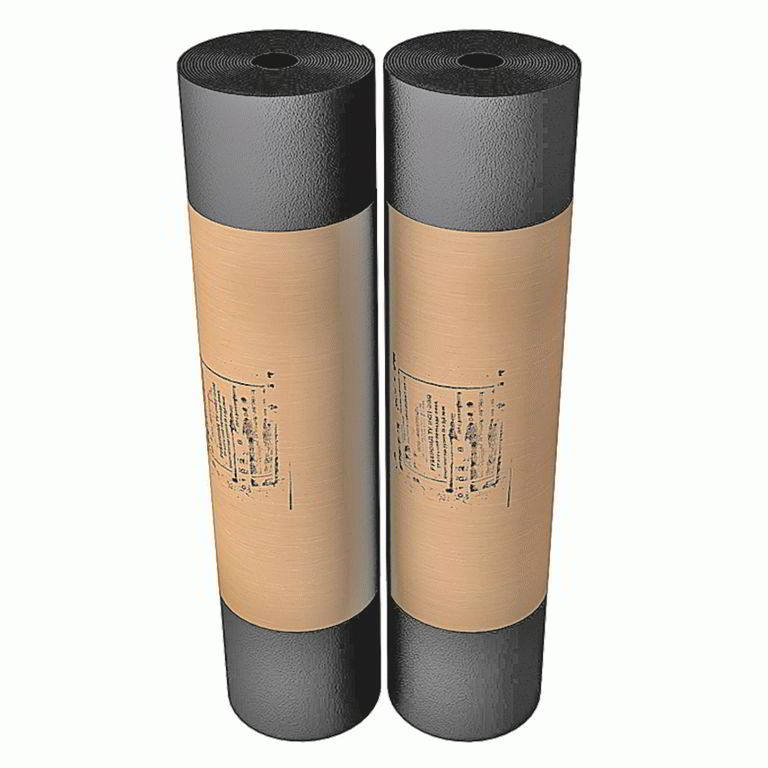
Producer: CJSC "Soft Roof", Samara.
Filling: abrasive crumb (upper side).
Weight: 375gsm
Roll size: 1x10 meters.
Roll weight: 29 kg.
Average price: 565 rubles per roll.
- high density;
- increased tear resistance.
- the price is much higher than that of a conventional roofing material;
- rolls are heavier.
Rubemast RNP-400-1.5
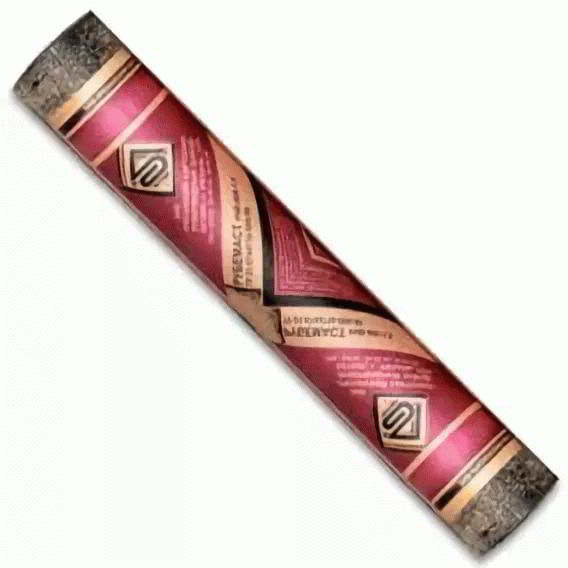
Producer: Korda LLC.
Coating: film + double-sided fine-grained coating.
Density: 400 gr/sq.m.
Roll size: 1x10 meters.
Average price: 600 rubles per roll.
- filling and film on both sides;
- very high resistance to tearing and cracking.
- rolls are heavy, add significant weight to the roof;
- the price of rubemast increases significantly with increasing density.
Stekloizol
Outwardly, it is very similar to roofing material and rubemast, however, it has significant differences from them. It is based not on cardboard, but on fiberglass (fiberglass). And it is this material that is impregnated with bitumen.On the one hand there is a filling, on the other - a thin fusible film. The installation itself is also carried out by welding.
Fiberglass significantly outperforms the cardboard base, as it does not rot. Also, the dense base does not allow the upper layers to crack. Hence the durability of the coating and the service life of up to 20 years.
Popular manufacturers of glass isol:
Stekloizol R HPP 2.1
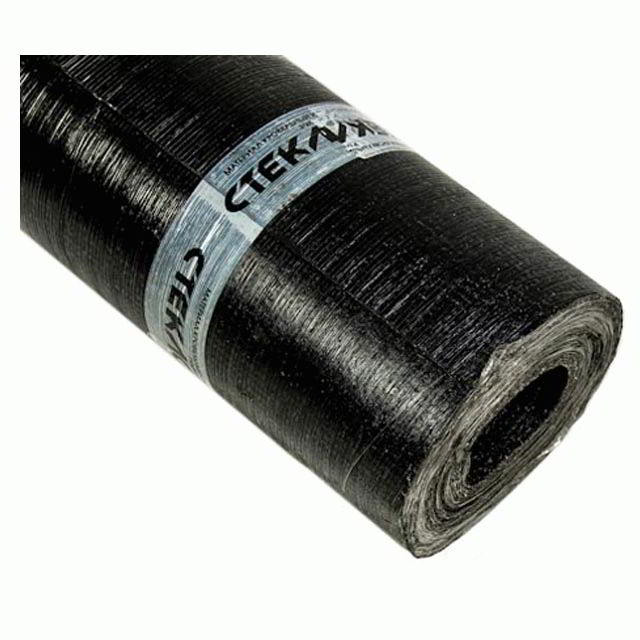
Producer: TechnoNIKOL, Russia.
Roll size: 1x9 meters.
Material thickness: 2.1 mm.
Roll weight: 18.9 kg.
Average price: 400 rubles per roll.
- crack resistance, high density;
- with proper laying, it forms a flat, without bumps, surface.
- the price is higher than roofing material and rubemast;
- in a roll only 9 sq.m. material.
Stekloizol U K-3.5
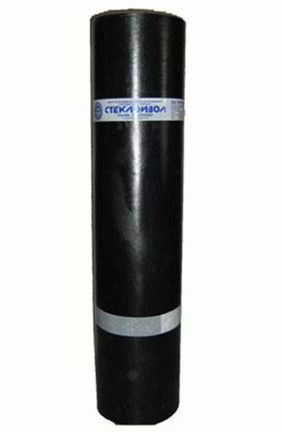
Manufacturer: Russia.
Filling: gray crumb.
Roll size: 1x9 sq.m.
Thickness: 3mm.
Roll weight: 32.5 kg.
Average price: 550 rubles.
- very high density and durability.
- big weight;
- high price.
Euroruberoid (bitumen-polymer membrane)
It is similar to its predecessors (roofing material, rubemast, stekloizol), but in terms of execution it is at a much higher level. Today, among bituminous coatings, this material is the most modern and highly functional. It is based on fiberglass or polyester.
Impregnation - bitumen with various additives (eg pieces of rubber) and fillers. On both sides of the roll there are polymer films and / or bulk materials (talc, sand, shale). Installation of euroroofing material is carried out either by heating one of the layers, or - if there is a self-adhesive material on one side - by removing the protective film and gluing it.
Popular brands of euroroofing material:
Euroruberoid HKP 2.5 mm
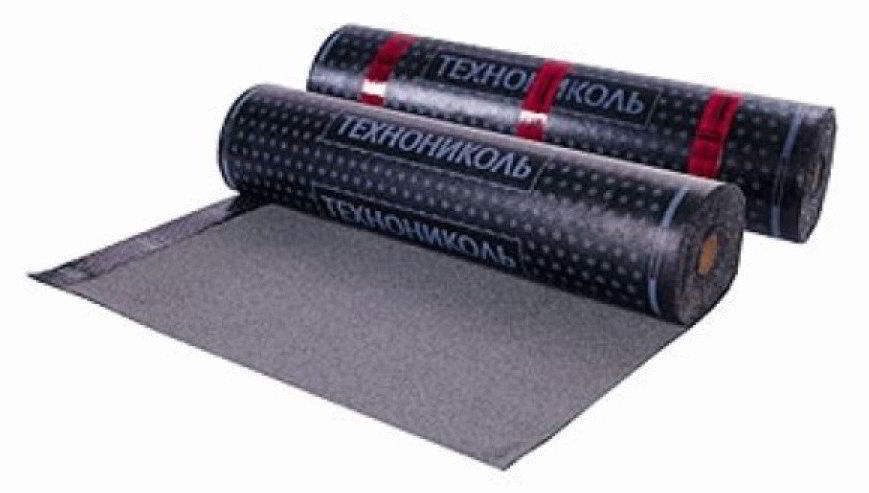
Manufacturer: TechnoNIKOL.
Sheet thickness: 2.5 mm.
Average price: 48r/sq.m.
- domestic manufacturer provides an affordable price;
- available in various thicknesses;
- high quality material.
- The material is rare and hard to find.
How to correctly choose euroroofing material - in the video:
Polymer membranes
Not so long ago, a material that appeared on the market is very popular in roofing. Does such a coating perfectly tolerate mechanical stress? Temperature fluctuations and much more elastic than bituminous materials. In addition, the membranes are supplied in much larger rolls compared to roofing felt: up to 60 meters long and up to 20 meters wide, so much less seams are obtained during installation.
The term of effective operation of such material: 30-50 years.
Membranes are divided (depending on the base material) into PVC, TPO and EPDM.
PVC membranes
The basis contains polyvinyl chloride and reinforcement - polyester mesh. To increase the elasticity of the material in PVC, volatile materials are added - plasticizers, which eventually evaporate from the coating.
You can order rolls in different colors. Only over time the colors fade in the sun.
Popular brands of PVC membranes:
Logikroof V-RP RAL 9001 1.2 mm (2.1 x 25 M). Various color performances.
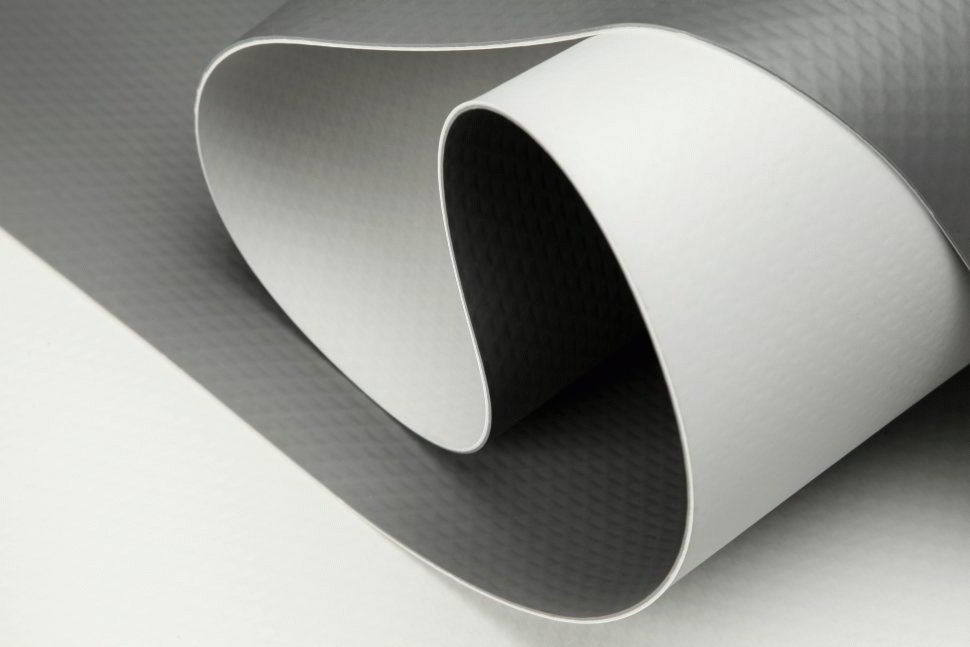
Manufacturer: TechnoNIKOL.
Sheet thickness: 1.2 mm.
Roll size: 2.1x25 meters.
Average price: 410 rubles per roll.
- performance in various colors;
- light weight of the material;
- high strength and durability.
- relatively small area of the roll;
- volatile substances are not environmentally friendly.
PVC membrane laying technology - in the video:
Ecoplast V-RP GRAY (T) 1.5 MM (2.1 X 20 M). Color: grey.
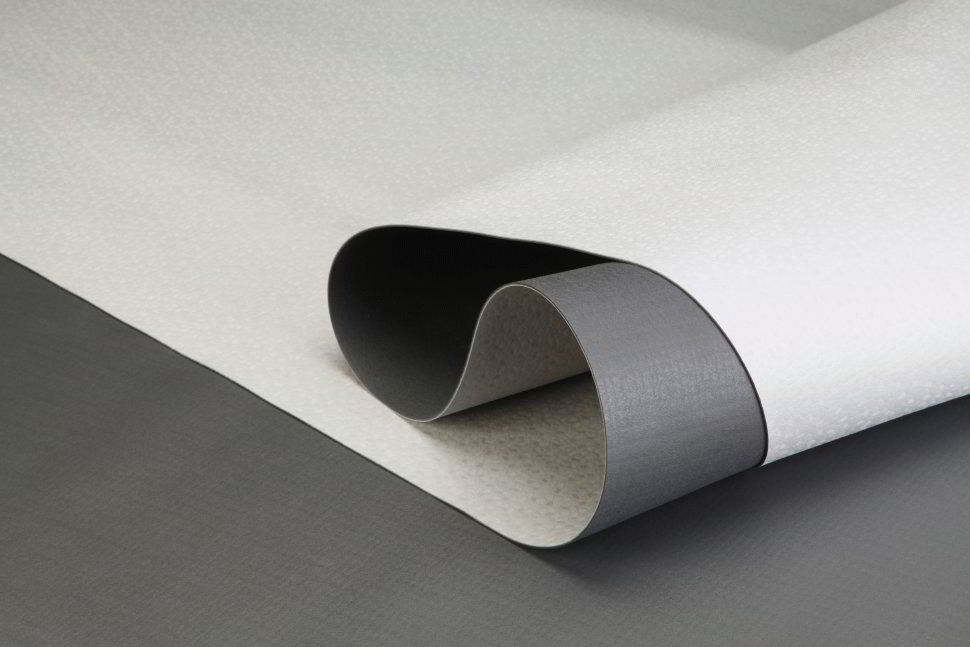
Production: TechnoNIKOL.
Sheet thickness: 1.5 mm.
Roll size: 2.1x20 m.
Average price: 390 rubles per roll.
- increased thickness and strength.
- color performance - only gray;
- volatile substances are not environmentally friendly;
- relatively small roll area.
TPO membranes
The basis contains thermoplastic olefins, and as reinforcement - fiberglass or polyester mesh. There are membranes of this type without reinforcement - strength allows.
There are no volatile substances in this membrane, therefore it is less hazardous to the environment than PVC membranes. In addition, this material can withstand temperatures up to -60 °C. without deformation.
Popular manufacturers of TPO membranes:
Membrane TPO Sure-Weld 2.03mm reinforced
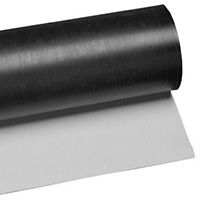
Manufacturer: Carlisle, USA.
Sheet thickness: 2.03 mm.
Roll size: 3.05x30.48 m.
Average price: 1300 rubles per roll.
- very high insulating properties;
- great tear resistance;
- ease of installation;
- large roll area.
- high price.
Membrane FireStone UltraPly TPO 1.83mm reinforced
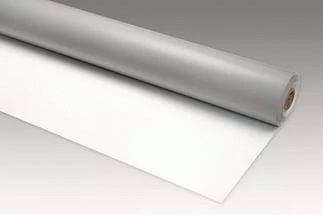
Manufacturer: Firestone, USA.
Sheet thickness: 1.83 mm.
Roll size: 2.44x30.5 m.
Average price: 1500 rubles per roll.
- quality and many years of experience of the manufacturer;
- big rolls.
- high price.
Video instruction for laying TPO membrane:
EPDM membranes
It is based on rubber, reinforced with fiberglass or polyester mesh.Compared to other membranes, it has a much higher strength and, oddly enough, a lower price.
Such a material can be made not only on the basis of rubber, but on the one hand have a bitumen-polymer coating. Also, this material can be mounted on old bitumen without dismantling the latter.
More details about this material - in the video:
Popular manufacturers of EPDM membranes.
Butyl rubber film "GISCOLENE F"
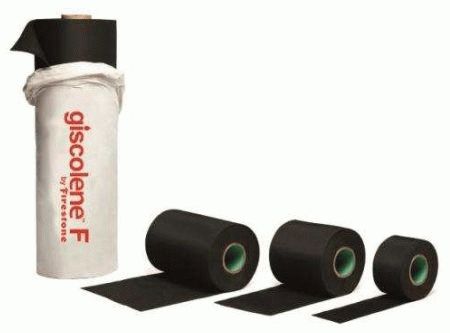
Manufacturer: Firestone, USA.
Sheet thickness: 0.8 mm.
Roll size: 20 sq.m.
Average price: 370 rubles per roll.
- maintains temperatures from-70 to +130 gr.S.
- small thickness;
- increased resistance to mechanical damage.
- small roll area.
Film butyl rubber EPDM membrane Firestone width 9.15m
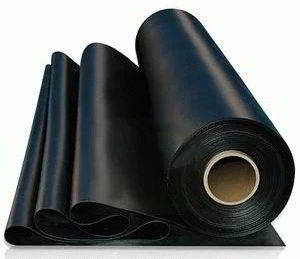
Manufacturer: Firestone, USA.
Sheet thickness: 1.02 mm.
Roll size: 9.15x30.5 m.
Average price: 600 rubles per roll.
- high strength;
- large rolls.
- there are no special ones.
Bulk mastics
Roll materials for roofing have one significant drawback: the presence of seams and joints that need to be very carefully worked out from leaks. Joints are weak points in the resulting roof.
With the help of bulk roofing materials, it is possible to make an integral coating and not resort to complex laying of rolls.
The disadvantage is the short service life of such coatings: only 3-10 years.
Roofing mastics are viscous masses that harden over time when exposed to air. Mastics are also used during the installation of rolled roofing as a fastening material.
Self-leveling roofing mastics come in cold and hot applications. Cold ones are already ready for application, while hot ones must be heated to 160-180 degrees C.
Mastics are divided into:
- bituminous;
- bitumen-rubber (they also contain crumb rubber);
- bitumen-polymer (polymers);
- polymeric (purely from polymers).
Popular and recommended manufacturers of bulk mastics:
Mastic bituminous 18l Izoart
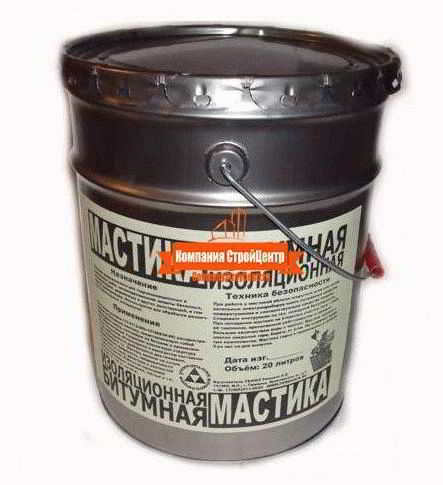
Hot mastic (that is, it must be heated before installation) is a binder bitumen with fillers. It can be made with antiseptics and herbicides.
Manufacturer: Isoart.
Volume: 18l.
Average price: 330 rubles per bucket.
- affordable price.
- the need for heating.
Mastic Bitumen-rubber AquaMast 3 kg or 18 kg
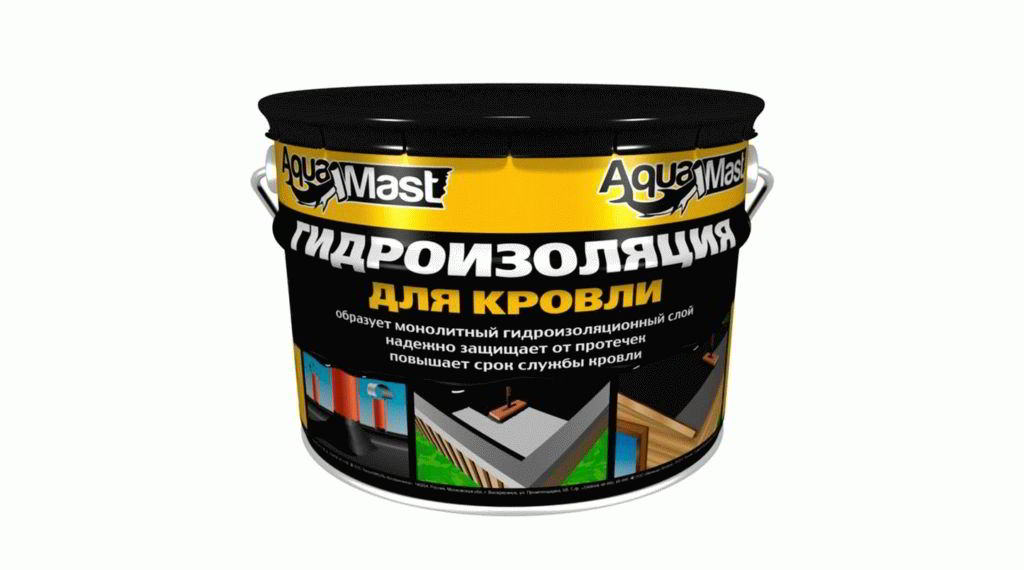
Cold mastic: bituminous binder with crumb rubber, processing aids, organic solvent and mineral filler.
Manufacturer: AquaMast.
Weight: 3 kg or 18 kg.
Average price: 350 rubles for a bucket of 3 kg and 1370 rubles for a bucket of 18 kg.
- crumb rubber for better protection and additives for better durability;
- cold mounting.
- no particular ones were found.
Mastic Bitumen-isolating TechnoNikol Imperial 20 l
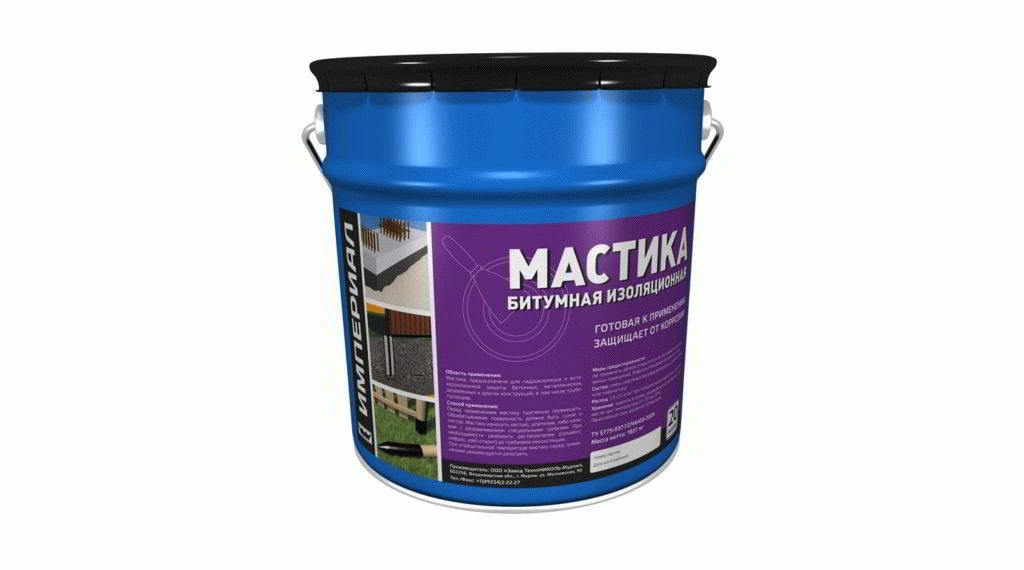
Cold mastic, completely ready for installation. Composition: bitumen plus special polymer materials.
Manufacturer: TechnoNIKOL.
Volume: 20l.
Average price: 800 rubles per 20l bucket.
- cold application;
- excellent insulating properties;
- can be used to insulate pipes and other structures.
- no particular ones were found.
Roofing emulsion mastic TechnoNIKOL No. 31
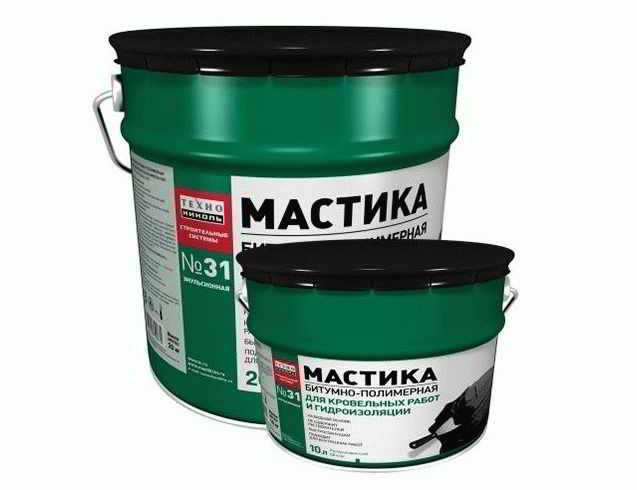
Cold mastic, consisting of an aqueous emulsion of bitumen, artificial rubber, technological fillers and mineral additives. Provides excellent adhesion to the base, strength and durability.
Manufacturer: TechnoNIKOL.
Weight: 18 kg.
Average price: 1150 rubles for a bucket of 20 kg.
- many useful fillers that ensure the stability and durability of the coating;
- cold application.
- quite high price.
Remember that under the roof of your house you will live for more than one year. Choose a reliable cover. Consider the location, climate. Do you need to make a roof in an industrial building or country house? In a large shopping and entertainment center in the far north or a small grocery warehouse in a warm strip of the country? We have presented many types of coatings, and now you can confidently choose what you need in your case.
new entries
Categories
Useful
Popular Articles
-

Top ranking of the best and cheapest scooters up to 50cc in 2022
Views: 131649 -

Rating of the best soundproofing materials for an apartment in 2022
Views: 127687 -

Rating of cheap analogues of expensive medicines for flu and colds for 2022
Views: 124516 -

The best men's sneakers in 2022
Views: 124030 -

The Best Complex Vitamins in 2022
Views: 121937 -

Top ranking of the best smartwatches 2022 - price-quality ratio
Views: 114978 -

The best paint for gray hair - top rating 2022
Views: 113393 -

Ranking of the best wood paints for interior work in 2022
Views: 110317 -

Rating of the best spinning reels in 2022
Views: 105326 -

Ranking of the best sex dolls for men for 2022
Views: 104362 -

Ranking of the best action cameras from China in 2022
Views: 102214 -

The most effective calcium preparations for adults and children in 2022
Views: 102010

